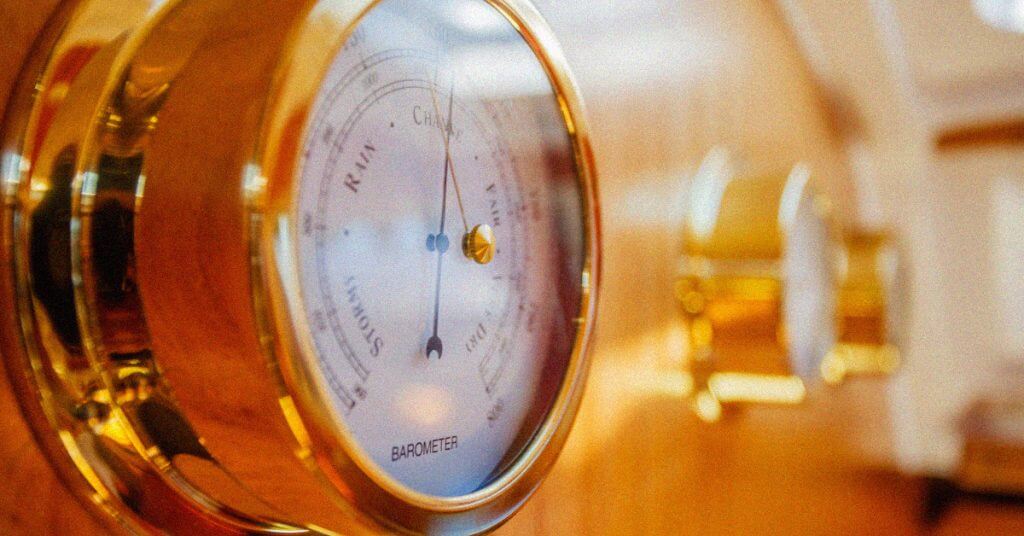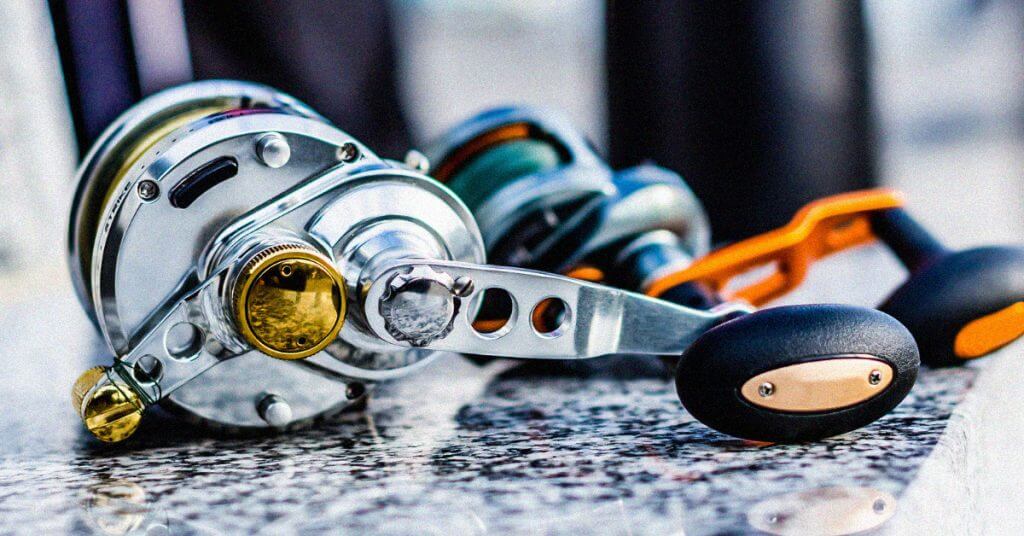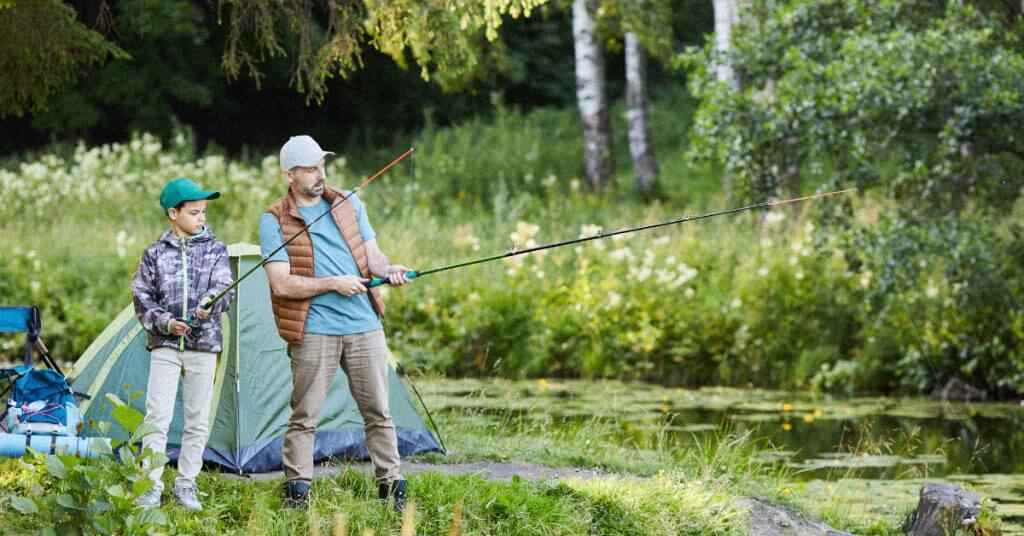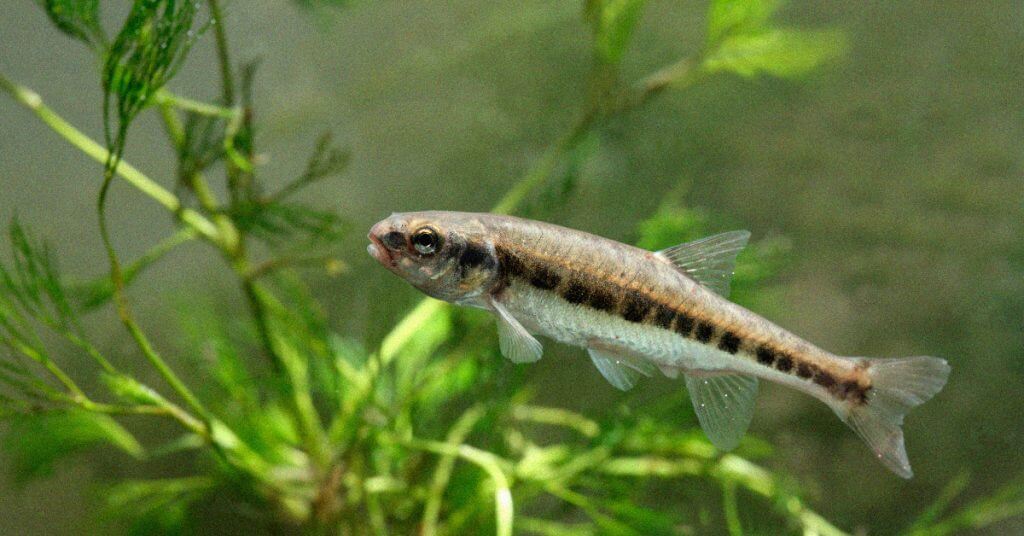To catch white bass, seek open water or areas with a current. They’re a schooling fish and they don’t stay in place. These aren’t monsters and light tackle is more than enough.
White, clear, and chartreuse shads or standard worms and a topwater setup are perfect for white bass.
On paper, knowing how to catch white bass (sand bass, sandies, silver bass) is the simplest thing in the world. Most blogs throw hooks, lures, baits, jigs, trolling advice, and various setups at you from the start.
That’s all well and good, but you have to know where to find them first.
Anglers recommend all kinds of things for white bass, and a lot of those things work just fine.
The thing is, white bass are schooling fish, so it’s important to present something on their level, both in the water and what’s on your hook.
White bass fishing is as strategic as it is fun, but only if you adjust to its habits.
YourBassGuy.com Community Manager Wes Littlefield discusses in the YouTube video above how he consistently catches white bass every year.
Table of Contents
What are White Bass?
Morone Chrysops is the scientific name for white bass. No, that won’t help you catch them, but it’s always fun to know.
They’re similar (in terms of aesthetics) to striped bass when they’re fully grown, and they’re freshwater fish native to the midwest.
They’re very common in the Mississippi and Ohio Rivers, and you’ll often find them in areas where the current is moderate to strong. Another thing that white bass share in common with stripers is how they feed.
For the most part, white bass feed on whatever level of the water column they’re in or what’s directly above them. That’s why topwater setups are often very successful with white bass.
While most fish spook when there’s a splash in the water, white bass will head that way to investigate.
Shad and minnows are at the top of white bass food menu, so even the simplest setups (preferably with live bait) work, as well as more complicated rigs that demand specific techniques.
Finding White Bass
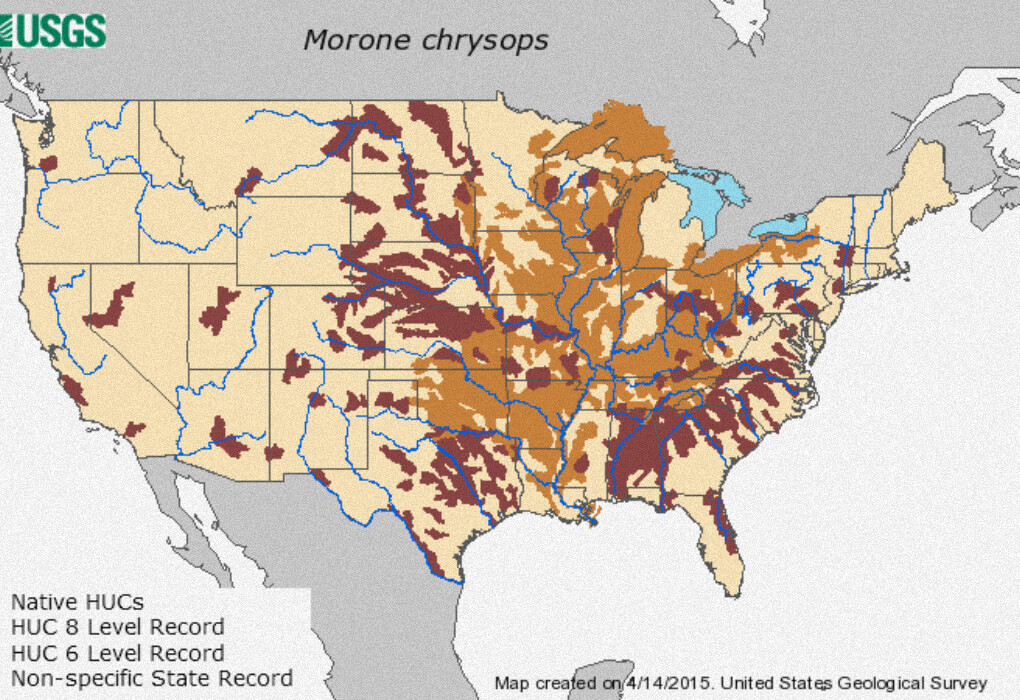
That’s the big question, isn’t it? All the prep in the world is worth nothing if you don’t know where to go. As we mentioned above, white bass don’t sit still for long.
As schooling fish, they follow two patterns: where the bait is and what their seasonal instincts tell them.
Rivers, streams, inlets, lakes, weedy areas, rocky areas, and around bridges are the favorite stomping grounds for white bass.
They’re not particularly fond of still or stagnant water. They prefer at least a moderate current. Anywhere contributing streams flow into lakes are good spots as well.
Spring
The spring months are considered the best time to put white bass on your to-do list, especially in the early spring, when the spawning instinct kicks in and white bass start heading up-current.
Water temperatures between 50°F and 60°F are ideal. The best part is, they don’t travel alone. White bass come together in mass groups.
If you’re in a reservoir, tributaries, and creeks that flow into the reservoir become your primary targets.
Summer
Current, current, current, and more current. That’s the key to finding white bass in the summer. Oh, and cool water.
They head out for deeper, cooler water in the summer months, and if they can find deep water with a bit of current, they’ll mass gather.
Keep your eye out for feeding frenzies. White bass feed on their own level and upward in the water column, often breaching the surface, creating noise and splashing.
They aren’t the most voracious top feeders out there, but they can be when the time is right. If you’re quick enough to hit the hot spot, you’ll fill the cooler with white bass.
Now is the best time to have a solid fish finder. If they aren’t giving themselves away, even a moderate fish finder will locate schools and keep you on top of them.
Fall
The action is less, but the chance to hook a fat white bass is at its highest. They’re well-fed from a summer’s worth of shad, minnows, and worms and just begging to find their way to a dinner plate.
The aforementioned tributaries feeding into lakes are the best places to go in the fall.
Winter
Don’t be a follower, and move on to other things in the winter. Many anglers will, but winter is a surprisingly opportune time to target white bass.
Again, bring your fish finder and locate structures. That’s where white bass like to congregate in the winter.
How to Catch White Bass in Rivers
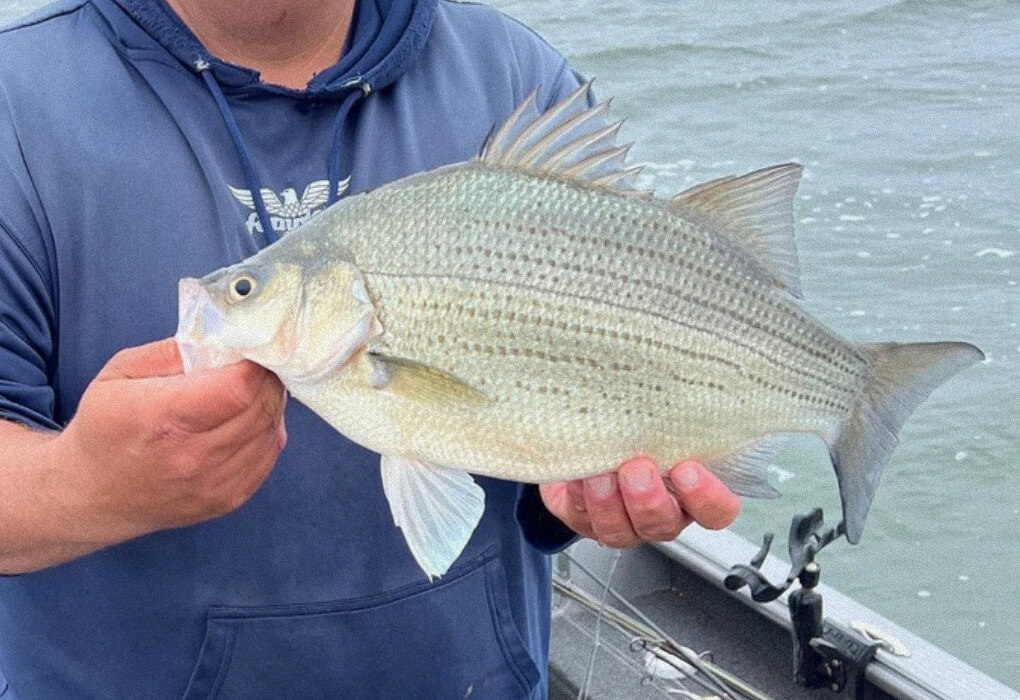
It’s much harder to catch feeding frenzies in rivers, unless the river in question has a sluggish current, is huge, and is generally quiet enough for you to keep your ears open.
White bass almost always move up-current, so that’s your first clue to success.
Springtime simplifies things. They’re heading out of the lakes and upstream, so you simply catch them at the mouth and farther upstream from the main lake.
There are often so many of them heading upstream you can practically dip a net and strike gold.
They tend to move upriver again in the late winter, and a good place to find them is where the water flows around structures, such as rocks, bridges, pilings, and things of that nature.
If you fish with a light rod, move up a notch to a medium action to give yourself an edge while working around structures and heavy cover.
If they aren’t hitting on the eddies and around structures, eyeball your fishfinder more often and seek out areas where it drops off steeply. When fishing for white bass in deeper water, vertical jigging is a great option.
The ideal depth is 11’ to 15’, so be certain your lure will drop but end up suspended at that depth.
Spawn
When you’re fishing the spawn, sometimes it’s hit and miss, especially if the white bass are still in their staging areas. When they’re ready, massive schools of white bass head upriver, and your opportunity blossoms.
While white bass will hit minnows any day of the week, now is the time to cast small spoon lures up-current and bring them in fast.
In shallower water, lipless crankbaits are nearly as effective as baitfish and spoons. The lipless feature keeps them low, and white bass love to go after what’s right in front of them.
If you need to go higher in the water column, switch to a slightly larger crankbait to keep it higher.
If you’re having success with baitfish, spinners come in handy too, especially white or metallic variations. A jig head, in tandem with a soft plastic (especially the ones with long, flapping, curly tails), is another fantastic option.
Choosing the Right Lures for White Bass
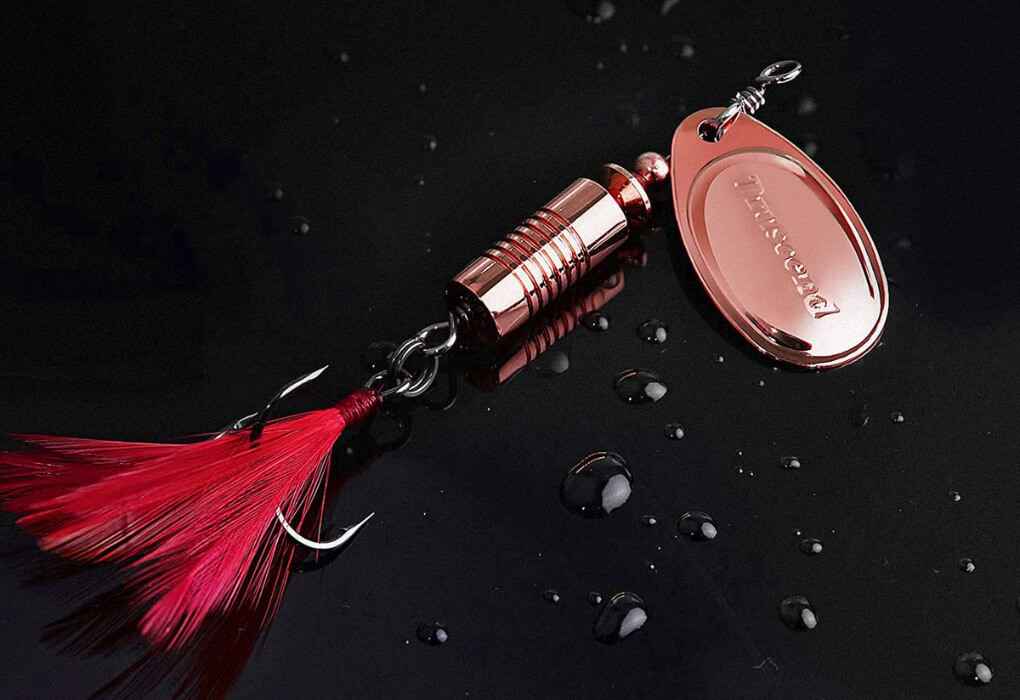
The good news is, we’ve touched on some of this just by going over fishing for white bass in rivers, lakes, tributaries, etc.
However, there’s a lot to know about this subject. The good thing is, white bass love minnows and shad. Then again, so do crappie. Fortunately, they’re good eating too.
When it comes to white bass, just about everything has a place in your tackle box, including rooster tail spinners, soft baits, jig heads, crankbaits, spoons, and (for fly fishing) small clousers in white or chartreuse or a swimming jimmy.
In fact, swimming jimmies are perfect for areas where a lot of baitfish are congregating.
Keep in mind the clarity of the water as well, and stick to natural baits and lures in clear water, with brighter, more reflective options in muddy water.
White bass aren’t too picky, as long as the baits resemble minnows or shad, they have difficulty turning them down.
Monofilament line (4 lb to 8 lb) with a fluorocarbon lead is the most popular, with a light rod (a little heavier if you’re dealing with a lot of structures), light to medium action, a 3/0 to 4/0 hook and a choice of the above lures/baits.
Frequently Asked Questions
What bait is best for white bass?
The best bait for white bass is a close call between live shad and minnows. It’s a close call However, it is also dependent on the season and circumstance.
What is the best time of day to catch white bass?
The best time of day to catch white bass is in the early morning hours or late in the evening.
What’s the biggest white bass ever caught?
The biggest white bass record is actually a tie. The first was caught in Lake Orange and weighed 6 lbs 13 ounces. It was caught by Ronald Sprouse in 1989, and he held that record for 21 years. In 2010, another 6 lb 13-ounce white bass was caught by Corey Crochet on the Amite River.
Bottom Line
You’ll have more luck with white bass out on the open water, with a few exceptions, such as spawning season when up-current tributaries can sometimes get a bit narrow.
They’re considered easy fish to catch, mostly because they aren’t too picky.
They also give themselves away, traveling in large schools and giving into feeding frenzy instincts for baitfish groups.
They’re especially easy during the spawn when many a veteran angler will tell you that your arms will feel like lead weights from bringing in all the white bass on a good run.
Now that I’ve talked about how to catch white bass – it’s your turn. Leave us a comment with your best tips!

